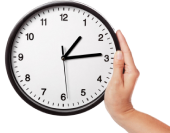This assessment will cover following questions:
- Prime Furniture is a furniture company that makes all kinds of furniture including tables, chairs, etc. Use a range of management accounting techniques.
- Determine the use of planning tools used in management accounting.
- Differentiate the ways in which organisations are able to use management accounting in response to financial problems.
INTRODUCTION
Management accounting is defined as the process of determining the cost of business and operations to prepare financial records and reports that supports decision-making of management in achieving the goals of company (Childress and et.al, 2015). The Report is based on Prime Furniture. The Report will outline various management accounting techniques, use of various planning tools in management accounting. Further, it will also describe ways in which different organizations are using management accounting to respond to financial problems etc.
Application of Techniques of Management Accounting
Overview of Management Accounting-
The term management accounting refers to the presentation of information with the aim of developing policies that are to be adopted by the management and supports in day-to-day activities. It uses the details related with operations of business to prepare reports that offer consistent insight into profit margin, labour utilization of the business that acts as an input to take routine decisions (Christian, 2018).
Microeconomic Techniques :
Cost-
It means the amount that has to be paid in order to get something . In business, cost refers to monetary valuation of material, labour, time, resources etc.
Types of Cost-
a) On The Basis of Nature of Costs-
- Fixed Cost: It refers to the cost of fixed inputs that are used in the process of production. These cost does not change with change in production volume.
- Variable Cost: It means the cost variable inputs that are used by business in production of goods. It changes with the change in volume of production.
- Semi-variable Cost: It means the cost which is partly variable and partly fixed. It does not directly influence the production but may change with production facilities.
b) On The Basis of Expense-
- Material Cost: It means the cost of purchasing raw material used in production of goods.
- Labour Cost: It refers to the payment made to temporary and permanent workers for their services.
- Overhead: It is the cost which changes with the level of production like cost of indirect labour etc.
Cost Volume Profit Analysis-
It refers to the method of cost accounting that focuses at the impact that different levels of volume and cost have on operating profit. It is also known as break even analysis that helps to determine break even point for various levels of cost structure and sales volume that are useful for managers to make short term economic decisions.

Flexible Budgeting-
Flexible budget is a type of budget that helps to recognize the variation in difference between variable and fixed cost to fluctuations in turnover, output etc. It is developed to change in the relation to the level of activity attained by firm actually (Duan and et.al, 2016). This type of budget is also called multi-volume budget. Major advantage is that it helps Prime Furniture to forecast its performance. Major limitation is that fixed cost is generally fixed only over a significant output range.
Absorption Costing-
It refers to the approach of accumulating cost related with the process of production and dividing them to individual products. The indirect and direct cost like direct labour, direct material and insurance etc. are accounted for using this method.
|
cost per unit (absorption costing) |
|
|
|
Figures (in £) |
|
Production cost(variable) |
0.65 |
|
Production cost (fixed) |
0.2 |
|
Cost of production per unit |
0.85 |
|
Profitability statement as per absorption costing |
||||
|
Quarter 1 |
||||
|
Particulars |
Units |
per unit price (in £) |
Figures (in £) |
Net figure (in £) |
|
|
|
|
|
|
|
Sales |
66000 |
1 |
|
66000 |
|
Less: COGS |
|
|
|
|
|
Opening stock |
0 |
0 |
0 |
|
|
add: purchases |
78000 |
0.85 |
66300 |
|
|
Less: closing stock |
12000 |
0.85 |
10200 |
56100 |
|
|
|
|
|
|
|
GP |
|
|
|
9900 |
|
Less: Selling & adm cost (fixed) |
|
|
|
5200 |
|
Net profit |
|
|
|
4700 |
|
Quarter 2 |
|
|||
|
Particulars |
Units |
per unit price (in £) |
Figures (in £) |
Net figure (in £) |
|
|
|
|
|
|
|
Sales |
74000 |
1 |
74000 |
|
|
Less: COGS |
|
|
|
|
|
Opening stock |
12000 |
0.85 |
10200 |
|
|
add: purchases |
66000 |
0.85 |
56100 |
|
|
Less: closing stock |
4000 |
0.85 |
3400 |
62900 |
|
|
|
|
|
|
|
GP |
|
|
|
11100 |
|
Less: Selling & adm cost (fixed) |
|
|
|
5200 |
|
Net profit |
|
|
|
5900 |
Marginal Costing-
It means the technique in which variable cost is charged to the units of cost. Whereas, fixed cost for the period is written off completely against contribution.
|
cost per unit (Marginal costing) |
|
|
|
Figures (in £) |
|
Production cost (fixed) |
0.65 |
|
Cost of production per unit |
0.65 |
|
Profitability statement as per absorption costing |
||||
|
Quarter 1 |
||||
|
Particulars |
Units |
per unit price (in £) |
Figures (in £) |
Net figure (in £) |
|
|
|
|
|
|
|
Sales |
66000 |
1 |
|
66000 |
|
Less: COGS |
|
|
|
|
|
Opening stock |
0 |
0 |
0 |
|
|
add: purchases |
78000 |
0.65 |
50700 |
|
|
Less: closing stock |
12000 |
0.65 |
7800 |
42900 |
|
GP |
|
|
|
23100 |
|
Less: fixed expenses |
|
|
||
|
fixed production cost of sales |
|
|
16000 |
|
|
Fixed selling & adm. |
5200 |
21200 |
||
|
Net profit |
|
|
|
1900 |
|
Quarter 2 |
||||
|
Particulars |
Units |
per unit price (in £) |
Figures (in £) |
Net figure (in £) |
|
|
|
|
|
|
|
Sales |
74000 |
1 |
|
74000 |
|
Less: COGS |
|
|
|
|
|
Opening stock |
12000 |
0.65 |
7800 |
|
|
add: purchases |
66000 |
0.65 |
42900 |
|
|
Less: closing stock |
4000 |
0.65 |
2600 |
48100 |
|
GP |
|
|
|
25900 |
|
Less: fixed expenses |
|
|
|
|
|
fixed production cost of sales |
|
|
16000 |
|
|
Fixed selling & adm |
|
|
5200 |
21200 |
|
Net profit |
|
|
|
4700 |
The above depicted table shows that net profitability as per marginal costing method accounts for £1900 & £4700 respectively. On the other side, in the case of absorption cost net profit, with respect to quarter 1 & 2 implies for £4700 and £5900 significantly. Hence, business unit is advised to employ absorption costing method over marginal. The reason behind this at the time of assessing production cost both fixed and variable expenses are considered. This in turn presents clear view of cost as well as profitability aspect.
Product Costing :
It is the method of determining all the expenses related with developing the products of company. It involves worker wages, raw material purchases etc. Fixed cost does not vary with decrease or increase in the amount of products or services. Whereas, variable cost are expenses that change in direct proportion to the units of output (Fisher, Gallino and Li, 2017).
Activity Based Costing-
It refers to the system of costing that focuses on the tasks performed to develop the products. Under this, firstly Prime Furniture will trace the activities and then to products. Cost are assigned to output on basis of individual product's use of every task.
Cost of Inventory :
Inventory Cost-
It means the cost related with purchasing, management and storage of raw material.
Types-
a) Ordering Cost: It is the cost of inbound logistics and procurement that forms a part of ordering cost.
b) Carrying Cost: It includes the cost of capital and inventory storage cost.
Methods-
- Specific Identification Method: under this, cost of inventory attaches the actual expenses to an identifiable unit of output.
- FIFO: It assumes that cost of goods purchased first are charged to cost of goods sold at the time when firm actually sold goods.
- LIFO: It assumes that expenses related with recent purchases are charged first to cost of goods sold when the firm actually sells output.
- Weighted average: It is a means of costing the closing inventory using weighted average unit cost.
Use of Planning Tools That are Applied in Management Accounting.
Using Budgets For Planning and Control:
The term budget refers to the formal statement of estimated expenses and income that is based on future objectives and plans. Prime Furniture may use various types of budgets such as-
1. Capital Budget -
The term capital budget means thee procedure of evaluating huge expenses and investments in order to get the best return on investment. It will help Prime Furniture to select profitable project across various projects.
Major advantage is that it helps business to understand different risks involved in investment opportunity. Limitation is that wrong decision may affect long term durability of business.
2. Operating Budget -
It reflects the expenses, estimated income, estimated cost by considering annual or quarterly performance. It should consider historical sales etc. Major benefit is that it will help Prime Furniture to work towards the aim of building financial reserves. Limitation is that if the budget is not changes each time to reflect new figures that it will provide inaccurate results (Maas, Schaltegger and Crutzen, 2016).
Alternative Methods of Budgeting-
a) Zero Based Budgeting-
It includes developing budget from scratch with zero base. It includes re-evaluating every part of cash flow and justifying expenditure that is incurred by business.
It helps Prime Furniture to make efficient allocation of resources. It also assists organization to identify various ways of doing things.
major limitation is that it is very time-consuming method. It requires large number of employees.
b) Behavioral Implications of Budgets
Dysfunctional Behaviour: Budgets may bring positive behaviour among individuals when objectives of managers are found to be consistent with goals of business.
Participative Budgeting: The process of budgeting is either bottom-up or top-down. In top-down process, top management develops budgets for organization. In bottom-up approach, all the people are involved in preparing budgets (Moloney, 2016).
Pricing: It is a method used by business to set the best price for goods or services.
Pricing Strategies.
- Competition-Based Pricing Strategy: Under this, company focuses on current market rate for a specific product or service. It does not consider consumer demand.
- Skimming Pricing Strategy: In this, firms charge the highest possible price for new items and reduce the price over time when product become less popular.
Common Costing Systems:
- Actual Costing: This type of costing system only uses actual expenses that are allocated and incurred and it does not include budgeted or standard amounts. It requires no pre-planning of standard cost.
- Normal Costing: It is the method that assigns cost of products on the basis of overheads, labour and material that are used to produce them.
Standard Costing System:
It is a tool for controlling, managing costs, planning budgets and evaluating cost management performance. It also includes estimating required expenses of a production process.
- Job Costing: Under this, business ascertain the cost separately for different jobs as each work order is different from clients to clients. Cost is compiled for particular quantity of goods or services that moves through production process (Olatunji, Oladipupo and Joshua, 2017).
- Process Costing: It is the method used by firm to assign and collect manufacturing costs to the output produced. It is used when company produces identical units.
Strategic Planning:
PEST is a tool that helps Prime Furniture identify the impact of external factors on business.
- Political: It involves factors like political stability in the country, rules and regulations of the government, etc. Political conditions in the country will affect operations of Prime Furniture.
- Economical: It includes factors like purchasing power of customers, rate of inflation, etc. If purchasing power of people is high, they will spend money on purchasing furniture.
- Social: It involves attitude and beliefs of people towards the company and products. firm should develop products as per the customer requirements (Said, 2016).
- Technological: It includes change in technology of producing and distributing items to clients. Prime Furniture should use innovative tools to make furniture items.
Compare Ways in Which Organizations Use Management Accounting.
|
Basis |
Prime Furniture |
Triumph Furniture Company |
|
Financial problems |
Currently, firm is facing the problem of inconsistency in sales volume. |
At present, company is facing the issue of high expenses as compared with operating income. |
|
Benchmarking |
It is the process of obtaining measure. Firm uses benchmarking to make inquiry to facilities an processes used by competitors (Shigaev, 2015). |
Company uses benchmarks to determine the methods adopted by other firms operating in furniture industry to improve their performance. It develops set of metrics to monitor the expenses. |
|
Key Performance Indicators |
It is the measurable value that demonstrates how effectively firm is attaining business objectives. To improve the consistency in sales Prime Furniture uses financial indicators like operating cash flow etc. |
To reduce the cost of operations the organization uses financial KPI's like current ratio etc. Further, it also uses non financial KPI's like operations quality etc. |
Financial Governance -
It is defined as the way an organization manages, collects, controls and monitor financial nature information. It involves the way firm track financial transactions etc. It is important because it provides accurate information and records that executives uses to dictate the direction based on business financial reality.
Management Accounting Skill-
Characteristics of Effective Management Accountant:
Effective management accountant possess features like a strong sense of ethics, sense of accountability, ability to work in a team etc.
These skills help management accountant of Prime Furniture to deal with complex business situations. It also helps to coordinate accounting operations, maintaining budgets etc (Said, 2016).
Effective Strategies and Systems-
Inefficient management processes that provides wrong information generally causes more harm than good. Strong management reporting is required to produce reliable, timely information. It helps to make better quality business decisions regarding the future of the business. Insight collected from reporting helps to make deeper analysis to understand problems and to offer right comparison against competitors.
Also read :- Role of Management Accounting in Budget Preparation
CONCLUSION
The above Report has outlined that there are various types of cost such as fixed cost, variable cost, semi-variable cost etc. Cost volume profit analysis is the method of cost accounting that focuses at the effect that different levels of volume and cost have on operating profit Further, it has been concluded that fixed cost does not changes with decrease or increase in the amount of products or services. The two major types of inventory cost are ordering and carrying cost. To get more details about online assignment help ask our experts.


 Company
Company














